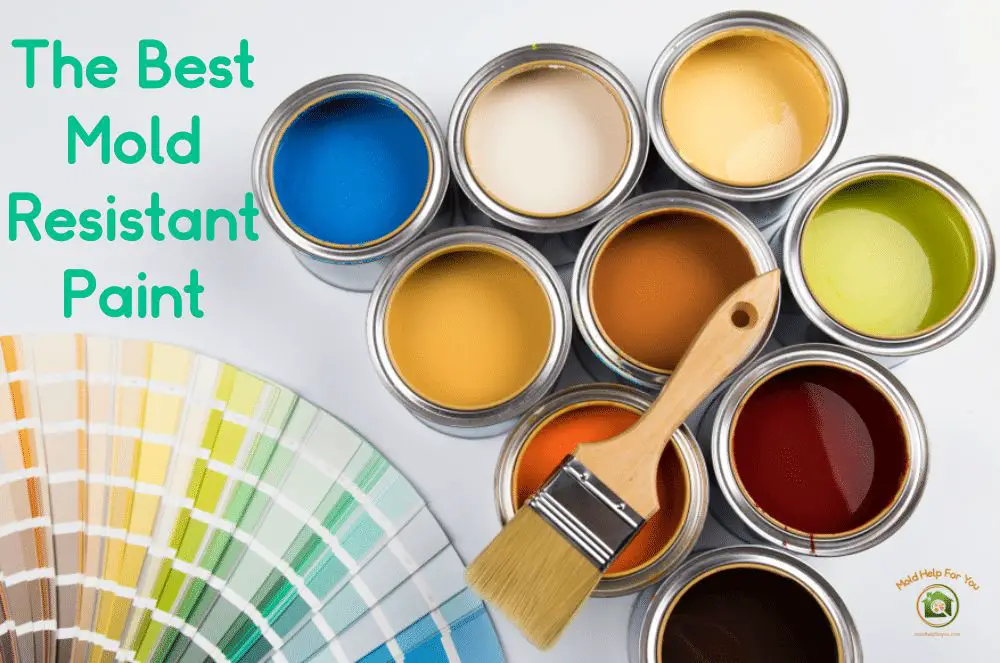Mold and mildew can be a big problem in homes, especially in damp or humid environments. The right type of paint can help prevent mold and mildew from growing by creating a protective barrier. When choosing paint for mold and mildew prevention, there are a few key factors to consider:
Page Contents
- 1 Look for paints labeled “mildew resistant”
- 2 Choose exterior over interior paint
- 3 Use satin or gloss finishes
- 4 Look for essential mildewcide ingredients
- 5 Consider epoxy paint
- 6 Apply primer first
- 7 Maintain good ventilation
- 8 Clean surfaces thoroughly before painting
- 9 Apply sufficient coats
- 10 Conclusion
Look for paints labeled “mildew resistant”
The first thing to look for is paint that is specifically labeled as “mildew resistant” or “mold resistant.” These paints contain special additives like zinc oxide, sodium borate, or anti-microbial chemicals that inhibit mold and mildew growth.
Choose exterior over interior paint
Exterior paints are designed to withstand moisture, humidity, and other outdoor elements. They tend to be more mildew resistant than regular interior wall paints. Opt for an exterior paint even when painting indoors in damp rooms like basements or bathrooms.
Use satin or gloss finishes
Flat or matte paint finishes absorb moisture and provide an environment where mold and mildew can grow. Satin or gloss finishes repel moisture better. Gloss is the most moisture-resistant. Semi-gloss is also a good option for bathrooms, kitchens, and laundry rooms.
Look for essential mildewcide ingredients
The most effective mold and mildew inhibiting paints contain special mildewcide ingredients like:
- Zinc oxide – blocks mold growth
- Sodium borate – prevents spore germination
- Tributyl tin oxide – toxic to mold
- Chlorothalonil – powerfull broad-spectrum fungicide
Check the specifications to confirm the paint contains at least one of these active ingredients.
Consider epoxy paint
For damp areas like basements, bathrooms, and laundry rooms, a two-part epoxy paint is worth considering. The epoxy resin makes it extra moisture resistant. Epoxy paint also adheres really well to surfaces, creating a strong barrier.
Apply primer first
No matter what type of topcoat paint you use, it’s a good idea to start with a primer coat first. Primers seal the surface so moisture cannot get in behind the topcoat of paint. Use an oil-based primer for best mold and mildew resistance.
Maintain good ventilation
Proper ventilation is key to prevent moisture buildup that allows mold to grow. When painting, make sure the area has good air circulation. Run fans, open windows, and use dehumidifiers if needed.
Clean surfaces thoroughly before painting
Always start with a clean surface free of dirt, grease, mold and existing mildew. Wash walls with bleach or a detergent solution. Rinse and allow to fully dry before painting. This helps the paint adhere better.
Apply sufficient coats
Don’t skimp on paint. Apply at least two coats, allowing proper drying time between coats. This ensures you get a thick protective layer over the surface.
Conclusion
The best paints to prevent mold and mildew contain mildewcide additives and have moisture-resistant finishes like satin, semi-gloss or gloss. Exterior paints and epoxy formulations also resist moisture well. Always prepare surfaces thoroughly and apply primer and multiple coats of the topcoat for best protection. With the right paint and proper application, you can inhibit mold and mildew growth on any painted surface.
